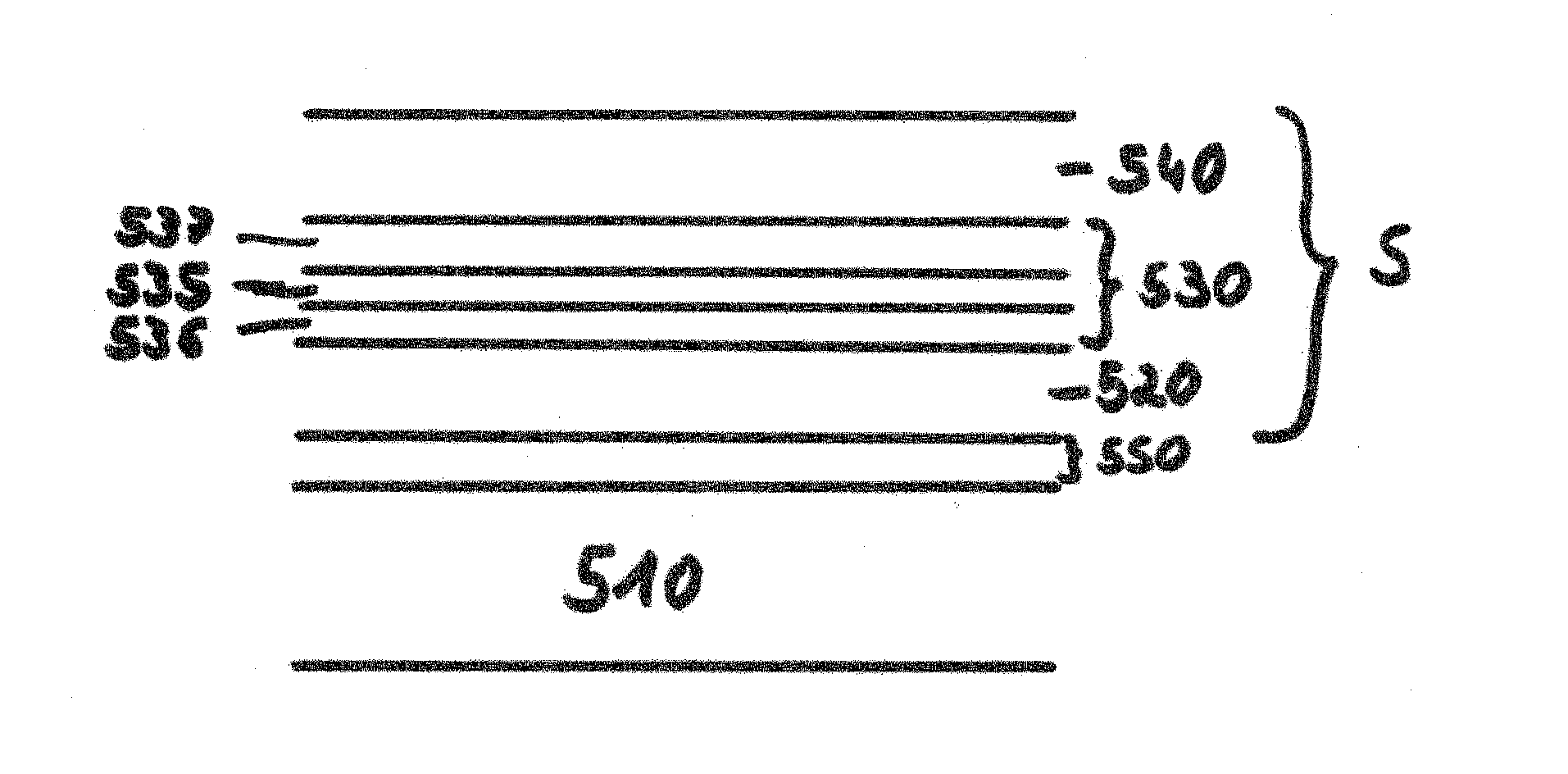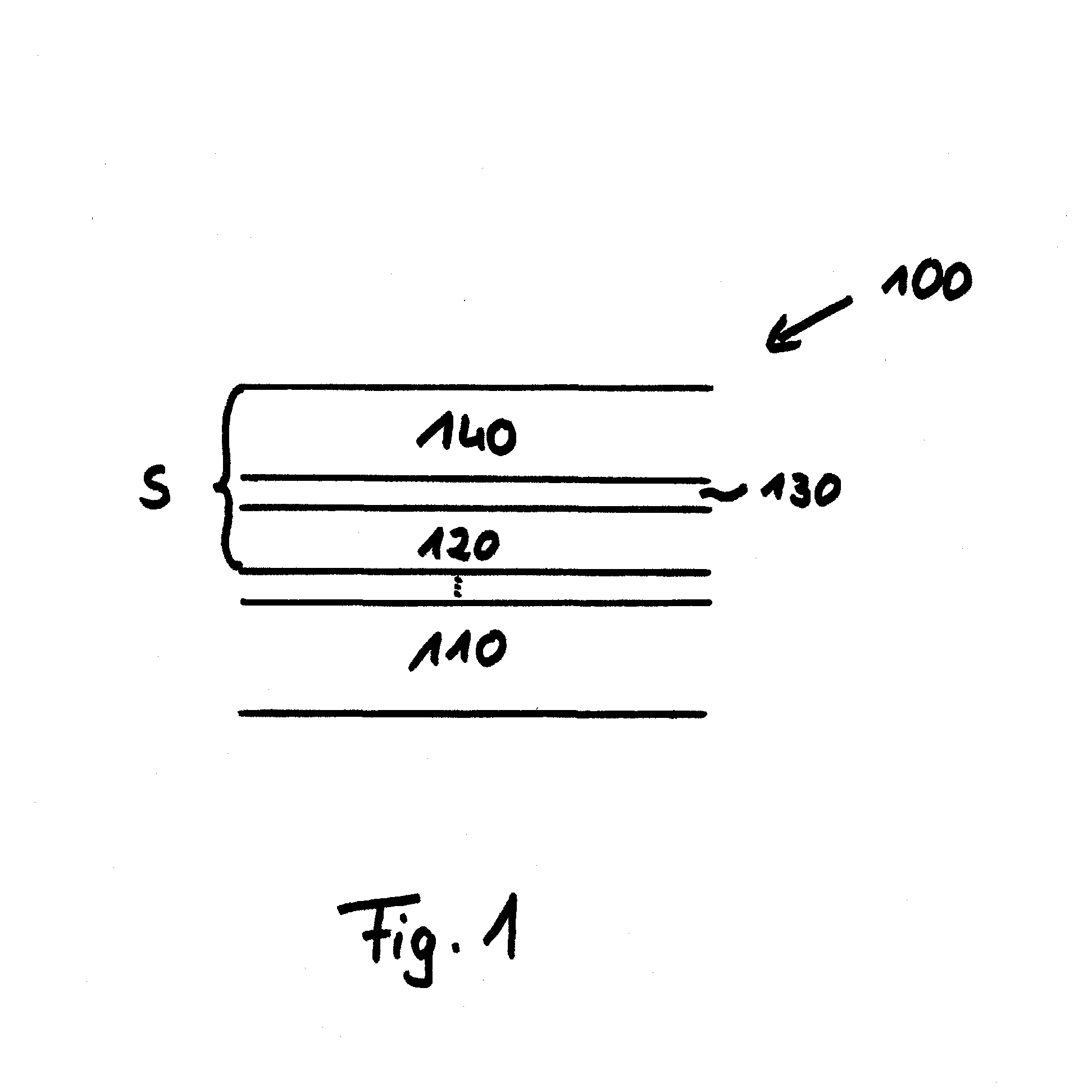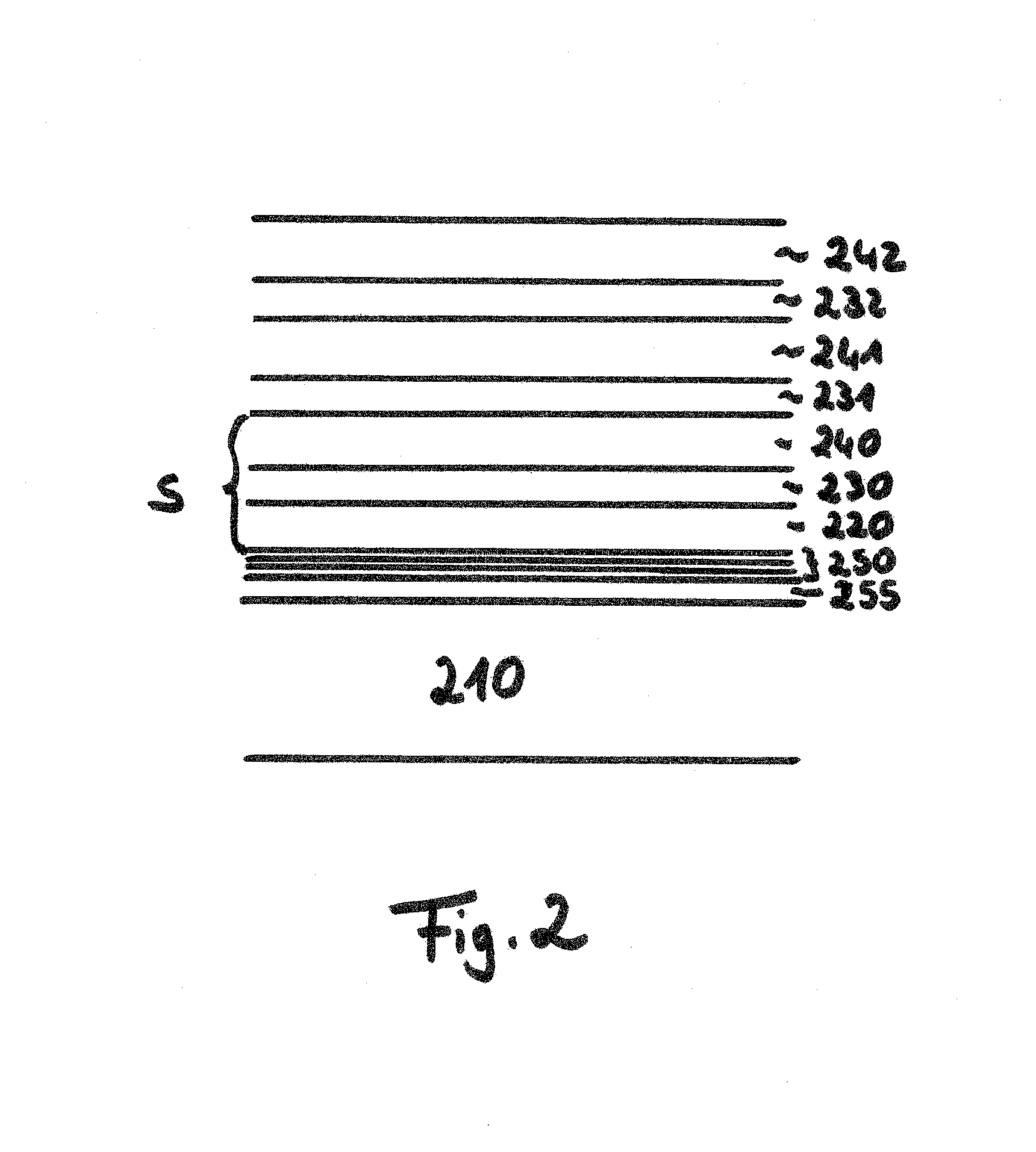P-doping of group-iii-nitride buffer layer structure on a heterosubstrate
a heterosubstrat and buffer layer technology, applied in the direction of semiconductors, electrical devices, transistors, etc., can solve the problems of undesired parasitic conductive channels in the buffer layer structure, and achieve the effects of reducing the concentration of p-type dopants, improving crystal quality, and improving the flow rate of gallium precursors
- Summary
- Abstract
- Description
- Claims
- Application Information
AI Technical Summary
Benefits of technology
Problems solved by technology
Method used
Image
Examples
Embodiment Construction
[0057]FIG. 1 shows an embodiment of a buffer layer structure 100 according to the invention. On a substrate 110, which in the present embodiment is made of silicon or silicon carbide, an intermediate layer may be grown. This intermediate layer is not shown in detail in FIG. 1, but only indicated by a space above the substrate 110. Such intermediate layer, which may contain a sub-layer structure, serves for achieving nucleation and initial lattice adaptation. In some embodiments, however, the intermediate layer may be omitted, and the buffer layer structure grown directly on the substrate. Examples of an intermediate layer in the form of a buffer stack will be described further below.
[0058]The buffer layer structure 100 comprises a stress management layer sequence S. The stress management layer sequence is formed of three group-III-nitride layers 120 to 140, of which a single interlayer 130 is sandwiched between a first group-III-nitride layer 120 and a second group-III-nitride layer...
PUM
 Login to View More
Login to View More Abstract
Description
Claims
Application Information
 Login to View More
Login to View More - R&D
- Intellectual Property
- Life Sciences
- Materials
- Tech Scout
- Unparalleled Data Quality
- Higher Quality Content
- 60% Fewer Hallucinations
Browse by: Latest US Patents, China's latest patents, Technical Efficacy Thesaurus, Application Domain, Technology Topic, Popular Technical Reports.
© 2025 PatSnap. All rights reserved.Legal|Privacy policy|Modern Slavery Act Transparency Statement|Sitemap|About US| Contact US: help@patsnap.com



